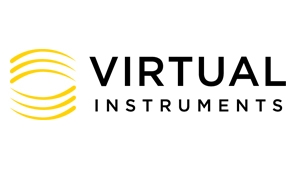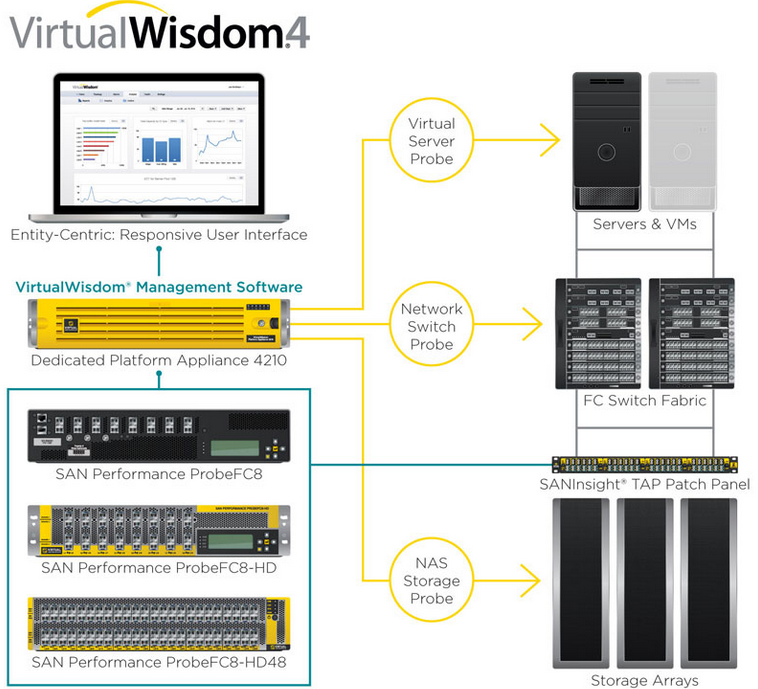 Virtual Instruments, interview with CEO John W. Thompson
Virtual Instruments, interview with CEO John W. Thompson
Date: 19 June 2014
Virtual Instruments CrunchBase profile
For my CEO Series I interview CEOs and founders of start-ups in IT Infrastructure, SAAS, Fintech, Mobile and eCommerce. Their views are shared on my blog.
Recently I had the great honor to speak with John W. Thompson. It is hard to introduce such a heavyweight, so I will start by listing a few of the most notable positions he occupies. His positions, besides being impressive – are relevant to understand the viewpoints he holds and voiced during the interview.
After a long career at IBM where he held various executive positions, John W. Thompson became CEO at Symantec, which he helped build to a $6 billion company over a period of 10 years. In 2009, he was contender to be secretary of the Department of Commerce.
 In 2009 he became involved with Virtual Instruments (VI) as an investor and became CEO of VI in 2010. Besides this demanding role, in February of this year John W. Thompson was famously appointed Chairman of the Board at Microsoft, replacing Bill Gates. In this function he was involved in replacing former CEO Steve Ballmer with the current CEO Satya Nadella. Here is a link to his appointment speech.
In 2009 he became involved with Virtual Instruments (VI) as an investor and became CEO of VI in 2010. Besides this demanding role, in February of this year John W. Thompson was famously appointed Chairman of the Board at Microsoft, replacing Bill Gates. In this function he was involved in replacing former CEO Steve Ballmer with the current CEO Satya Nadella. Here is a link to his appointment speech.
Additionally, PernixData, Liquid Robotics, Domo and Seagate are among the companies where John holds advisory positions.
Read my interview with Poojan Kumar, CEO of PernixData
Importance of IT infrastructure performance analytics
A striking take-away from the talk with John was the link he laid between IT infrastructure performance analytics and the Software Defined Datacenter.
A datacenter combines various hardware components that can be divided in three groups; Compute, Storage and Network resources. Each of these component groups have particular protocols and traditionally need to be controlled separately. In a traditional datacenter there is no centralized control layer from which an entire datacenter can be monitored, let alone controlled. Each of these component groups are typically administred by different groups of IT specialists, who do not necessarily share all their information amongst each other.
The idea behind the Software Defined Datacenter is to achieve centralized control over the hardware assets, by moving all intelligence up the datacenter stack and into one software layer.
Controlling all hardware assets from one software layer is interesting to enterprises, because it allows you to make more efficient and flexible use of your resources. This in turn makes your IT organization potentially more agile and scalable.
To achieve control from one software layer however, additional layers of abstraction are needed. This increases complexity, making it harder to pinpoint and solve problems when they arise.
IT infrastructure performance analytics is therefore key to understanding what happens ‘under the hood’ and a requirement when reaching for a higher level of control, like in the Software Defined Datacenter.
Enter Virtual Instruments. Their new product Virtual Wisdom 4 works with a combination of hardware and software, that collectively measures data in your datacenter and analyses that data to see whether your datacenter is healthy and runs efficiently. In the below diagram you see an overview of their latest product VW 4.

In my interview with John I wanted to gain insight into his background and learn about his vision on the infrastructure market.
WTH: How do you combine all the things you do together?
JWT: I think we all have a capacity that we never realize how significant it might be until we get challenged to do more than we thought possible. Clearly after working in this industry over 40 years I found a way to balance work and pleasure and family.
I am very fortunate to have a very supportive wife who having spent 19 years herself at IBM and having a law degree, and a practice in law here she realizes the challenges that come along with my work.
I am lucky to have both all the experience and all the support at home to do what I do.
WTH: I just realized that indeed a stable basis must be crucial to what you do
JWT: No question about it. If you think about my schedule Willem I would not consider myself a 24/7 guy but I certainly work 6 days a week or more, depending on what’s going on. There were periods of time in the second half of 2013 when I was probably working 70-80 hours a week but that was what it took to get the task done that were ahead of me at that point in time. As we all know as professionals you don’t think about the time you think about the task and how you can get the task done in the most efficient manner.
WTH: A lot of your time must go into Virtual Instruments, what is it about VI that makes it appealing for you?
JWT: Let me give you a bit of background to my involvement with VI and how I got to where I am. As it turns out I became an investor in VI shortly after it was created in 2008. As you may recall I announced my plan to retire from Symantec in the fall of 2008 which was shortly after VI was founded. My plan at that point was that I would invest in early stage companies and get involved as an advisor or board member. So in early 2009 I joined the VI board.
As luck would have it, as probable with many early stage companies, in the spring of 2010 VI hit a little bump in the road. As a board member I stepped in to find out what had happened and how had it happened, how to avoid a reoccurrence.
Collectively as a board we thought a leadership change would be an important element of preventing a reoccurrence. So I stepped in, thinking I would be the CEO for 3 or 4 months and going back to being an early stage investor. Well that would be 4 years ago on the 23rd of april.
What had been a plan for a temporary role became a permanent role. Evolution of our strategy has driven me to do things that quite frankly I had never done before. We have evolved from a SAN troubleshooting tool to an infrastructure performance management platform. Along the way we have raised 50 million in venture capital to support our product portfolio expansion and our global market expansion.
We are driving toward the creation of a new category that we think is critically important as large enterprises around the globe make this inevitable transition from physical to virtual to cloud.
WTH: Are you going into Cloud automation as well?
JWT: Good question. If you think about the customer focus for us, it is typically the largest and most complex enterprises in the world; banks, insurance companies, hospitals, telecom, online e/retailers, government agencies. Most of those clients have aspirations to build their own private clouds. They want to do that because there are three attributes that are appealing to them.
We think our technology falls squarely into that latter category. We think as we add capability to support additional server environments and additional storage protocols, from a monitoring perspective we hope to become the de facto standard for monitoring not just private clouds, but hybrid and public cloud environments as well.
We have no aspirations at this point to become the automation tool on the backend. What we want to do is become the analytical insight on the front end and have customers use the plethora of tools that they already have on the backend to effect changes based on the insights we have provided.
WTH: Aside from providing insights in the compute and storage layer Do you guys provide insights into the network as well?
JWT: We don’t, certainly not the WAN. Virtual Instruments is focused primarily on the fiber-channel network inside the datacenter. However we are quickly approaching a new product launch where we will add Network attached storage capability. So we will have IP support very shortly.
WTH: Different question, how do you view the path towards the automated datacenter?
JWT: I think there is an enormous amount of chatter in the industry these days about the Software Defined Datacenter. That is a datacenter where more and more of the processes are in fact automated and the assets that sit on the floor of the datacenter are stressed because we are driving towards higher utilization levels.
Essentially it is applying the concept of server virtualization, that VMware made so popular in the X-86 world, to every component in the datacenter.
One of the interesting by-products or consequences of that will be the difficulty in isolating where a problem or issue might be as you create more and more abstraction layers above the physical infrastructure itself.
That is why we believe that the Software Defined Datacenter makes the need for monitoring and deep visibility into the infrastructure even more important.
What we fundamentally believe is that the more awareness you can drive between the performance of the application and the performance of the infrastructure, the more you can ensure the service levels that people have come to expect.
Read my interview with Alex Benik, partner at Battery Ventures for his view on what’s driving the Software Defined Datacenter
Think of Virtual Instruments as the firm whose sole mission and purpose in life is to ensure that applications and infrastructure perform well together, perform excellently together.
Perform in a manner that has in fact driven us toward this notion of the Software Defined world, but you certainly need a different set of tools to monitor it than those that may have been architected 20 to 30 years ago.
WTH: How does a customer deploy your product Virtual Wisdom?
JWT: Virtual Wisdom has three categorical components; it is a software product that represents the Database engine, the Analytics engine for metrics that we feed in from our capture devices. We have a set of software probes that interrogate vCenter or the switch fabric and provides metrics of what it sees there. Then the magic in our solution is a hardware component, a probe that literally sits on the wire and looks at every request for data as it traverses the wire to and from the storage layer.
By aggregating all that data into virtual wisdom and running our own unique analysis against it we can produce insights about an operating environment that customers have never seen before.
The collection devices essentially produce about 300-350 metrics that are new and unique, the analytics that we apply is what creates the great insights that customers can use to take action to improve performance, the utilization of assets and the overall health of the environment.
WTH: How does Virtual Instruments adapt to different storage architectures, for instance architectures where caching layers such as PernixData are present?
JWT: First of we are a tool that operates at the protocol level, therefore the protocols are constant, regardless of who the provider is. In many instances all of the SSD devices use the fiber-channel protocol.
As long as it is fiber channel, or as time goes on NFS and CIF, as long as we can support the protocol, we are agnostic to the specific storage provider.
WTH: I spoke with a very interesting company recently, ThousandEyes, have you heard of them?
JWT: No I haven’t, what do they do exactly?
WTH: They offer a network performance monitoring service that covers both on-and-off premise Infrastructure. ThousandEyes provides an all-over view of your on-premise environment, public internet and your SAAS provider to indicate where potential problems in performance lie. As I can estimate, they take a broader view than VI does, based on the view that applications are increasingly cloud based, like Salesforce or Office 365, making them dependent on more than what happens on-premise.
Read my interview with Mohit Lad, CEO of ThousandEyes
JWT: this product might fall under the category of Application Performance Management where you look at it from the perspective of the end-user – the key stroke perspective. We expect to add deeper insight into the application layer, but we don’t look at the network.
One of the shortcomings of the APM products, frankly, is that they can not be specific as to where the problem is emanating. They can tell you there is a problem, but they cannot be specific enough to get you to the point where problem resolution is faster. We think there is a natural partnership opportunity frankly, between us and some of the APM providers where our insight into what’s going on at the server, switch fabric ant the storage layer, can provide insight into where the problem is, not just the fact that there is a problem.
WTH: That makes sense. Have you looked at the opportunity to team up with an APM?
JWT: We have spoken with a number of APM providers over the last 12 to 18 months. However we have been so focused on our new platform, VI 4, that we have not decided to distract our developers until we have established our new product in the marketplace.
WTH: What changes are made to the new VW 4 product?
JWT: The new platform has a number of important changes that we think our customers have been anxious for us to evolve. The first of which is it delivers significantly better performance with a new database capability a new data ingest capability and a much, much stronger analytics capability. Next and perhaps most importantly it delivers a new use interface which makes it more intuitive and easy to use and learn and understand. It would significantly increase the time to value to the customer.
Third it delivers new network attached storage protocol support. We will venture out of the fibre-channel world and in the NAS world. As you know it is the fastest expanding storage space and it expands our addressable market with almost 2 billion dollars.
WTH: That sounds great. I like the time-to-value metric by the way, and how that is linked to easy-to-use GUI’s
JWT: Having been in the industry for 43 years now Willem, I know that there is a lot of software out there that is shelfware. We want to add real value and at the same time make it easy to use, so that customers really use our product.
WTH: Thanks for this interview and looking forward to staying in touch.
We will follow up with John W. Thompson, stay tuned!
For more CEO interviews, check out my CEO series here
Geef een reactie